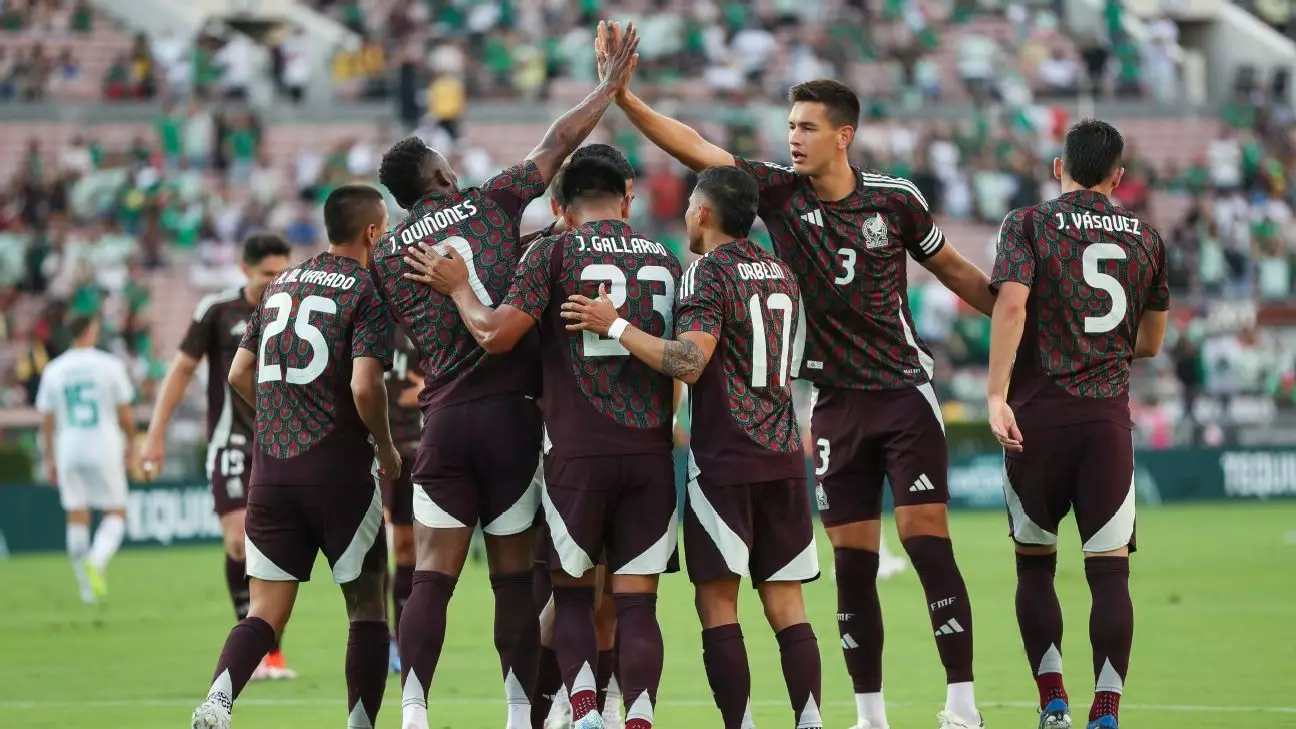Mexico’s national soccer team, often referred to as El Tri, finds itself at a critical juncture as a new chapter unfolds under the stewardship of head coach Javier Aguirre. Having enjoyed a storied career with the team in previous decades, Aguirre returned to the helm amidst mixed expectations. Following a disappointing showing at the 2024 Copa América, where Mexico failed to impress and quickly exited the tournament, the urgency for revitalization could not be more apparent. The initial friendlies yielded promising results—a convincing 3-0 win against New Zealand, followed by a hard-fought 0-0 draw with Canada. While these outcomes offer a foundation for optimism, it remains essential to scrutinize the implications of Aguirre’s tenure and the potential realization of his tactical vision.
Despite the favorable results, the context surrounding these games reveals ongoing challenges within the squad. Undoubtedly, the players showcased a renewed vigor that had been absent under former manager Jaime Lozano. The zeal displayed against New Zealand, particularly from players such as Luis Romo and Orbelín Pineda, was indicative of an eagerness to shed the lethargic tendencies of past performances. Aguirre’s approach appears to emphasize aggressive play, as seen in the match against Canada where the team committed 13 fouls and received two yellow cards within the first half. Such intensity was reassuring, but will it translate into more effective attacking schemes?
Aguirre’s tactical adjustments during the matches also warrant discussion. The adaptability displayed in the second half of the game against Canada reflects a mindset oriented towards growth and optimization. The fact that no goals were conceded in either match stands out as a remarkable achievement. The backline’s performance, led by players like César Montes and Israel Reyes, was commendable, providing a solid defensive foundation that Aguirre significantly prioritized.
While defensive solidity is desirable, the inability of key strikers, particularly Santiago Giménez, to find the back of the net raises eyebrows. Despite being a recognized talent in European club football, his struggles on the international stage create a pressing dilemma. The goalkeeper’s remarkable saves and the overall defensive record are commendable, but the absence of goals from strikers can hinder the overall momentum and confidence within the squad.
Aguirre has downplayed the significance of individual scoring, emphasizing that winning is paramount. However, the harsh reality is that a year-long goal drought for a player touted as Mexico’s emerging star is troubling. Goals win games—this age-old adage resonates loudly in high-stakes matches. The question lingers: can Aguirre devise a strategy that unleashes Giménez’s potential and gets him performing consistently at an international level?
Another significant concern for El Tri’s management is the apparent disenchantment of its fanbase. Recent attendance figures speak volumes, with surprisingly sparse crowds for matches that were expected to attract throngs of supporters. Playing in cavernous venues like the Rose Bowl and AT&T Stadium, the turnout has fallen short of typical expectations. The glaring contrast between Mexico’s historical fan support and current apathy invites scrutiny.
Fans are crucial stakeholders in El Tri’s journey. Their unwavering loyalty and passion for the team have been a source of strength in the past, but recent performances have tested their patience. Factors such as extreme weather and weekday match timings undoubtedly impact attendance, but they cannot entirely absolve the team from accountability. Engaging the fanbase and restoring a sense of excitement and pride will be a vital aspect of Aguirre’s mission moving forward.
Conclusion: A Long Road Ahead
As the curtain rises on Aguirre’s second tenure in charge, the stakes are high. A mixture of cautious optimism and an acute awareness of the hurdles ahead characterize this new phase for Mexico’s national team. The initial signs, including defensive stability and renewed player motivation, bode well; however, the lack of scoring potency and dwindling fan engagement highlight areas needing immediate attention.
Aguirre’s ability to balance these aspects will ultimately determine whether this resurgence is a fleeting moment or the beginning of a solid foundation for future success. Enthusiasm remains contingent on translating these friendly matches into a coherent winning strategy as they approach more significant competitions. The fans, the players, and the management—all eyes are now fixed on Aguirre and how he navigates the nuances of revitalizing Mexico’s soccer aspirations.


Leave a Reply